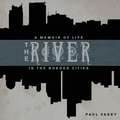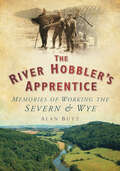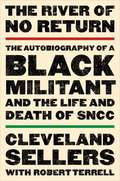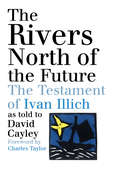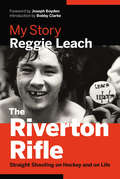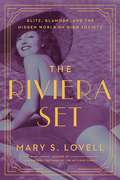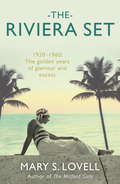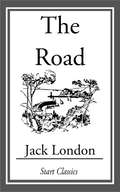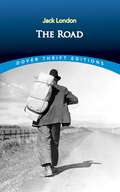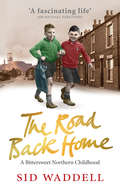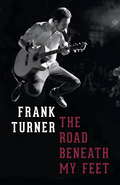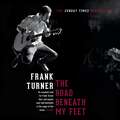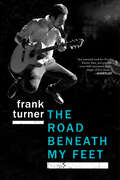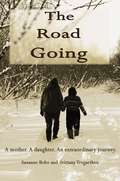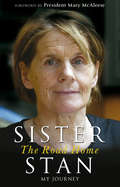- Table View
- List View
The Rivals: Their Epic Duels and Extraordinary Friendship
by Johnette Howardn March 1973 two women met on a tennis court in Akron, Ohio. Over the course of the next sixteen years, together they would change the world. In their long careers Martina Navratilova and Chris Evert played each other eighty times, sixty of those in finals. For twelve consecutive years, from 1975 to 1986, one or other finished the season ranked No. 1 in the world. Each set out to be the finest player women's tennis had ever seen; each goaded the other to greatness. Their contrasting styles - Martina, the epitome of serve-and-volley tennis, bravely charging to the net against cool and controlled Chris, the world's greatest baseline player - captivated millions across the globe. Tennis was a chauvinistic game when they arrived. But their brilliance demanded, and received, long-overdue respect for female sporting achievement. Their ability to forge a close friendship amidst their fierce competition still provokes wonder and admiration from fans. There has never been a sporting rivalry to match the intensity, longevity, public impact and emotional resonance of the years-long duel between these two great athletes. For nearly two decades we were transfixed by the struggle between the ice-maiden Chris - blonde, all-American, a nation's sweetheart - and the supreme athlete Martina, a Czech defector, the first outspoken openly gay athlete in female sport, and a woman who wore her heart on her sleeve at all times. Their lockstep careers played out against the backdrop of seismic change in sport and society: the women's movement; the gay rights' movement; the fall of the Iron Curtain; and the rise of women's tennis from backwater to big time (with a huge nod of gratitude to Billie Jean King). Thirty years on from the first meeting, both have become legends. Based on interviews with both Martina and Chris and those who knew them best, Johnette Howard gives us the story of these two remarkable women. Brilliantly researched, beautifully written, The Rivals will be read by those who love sport for years to come.
The River
by Paul Vasey"Ask anyone what they love most about Winzer, and they seem always to tell you it's the people, the family and friends webbed around each of us. True. But for me the town is also, and perhaps mainly, the larger-than-life characters who ghost around in my imagination and my memory: rumrunners and prize fighters and elegant old ladies and one-eyed thugs and earnest well-meaning politicians and hucksters and hookers and crusty old editors. Many of them I remember meeting. Some of them I actually met." -from The RiverThe River is Paul Vasey's tribute to a place he discovered by accident and loved over a lifetime. Chatty, anecdotal, personal and passionate, by one of Windsor's most celebrated reporters and radio hosts, this meandering memoir winds its way around a river town whose sights and characters may never be fully charted: a Windsor that fired a reporter's imagination, stole his heart, and eventually became the place he calls home.
The River Hobbler's Apprentice: Memories of Working the Severn and Wye
by Alan ButtThe rivers Severn and Wye were once home to many now long-forgotten crafts and skills. In The River Hobbler’s Apprentice: Memories of Working the Severn and Wye Alan Butt provides a vivid insight into the forgotten world of the river hobbler, a unique trade and one which he learnt of at the end of its days. Falling through the cracks of society the river hobbler paid no taxes and made a living by working whatever was available on and around the river. Changing throughout the year, tasks included catching salmon and elvers, rabbiting, cleaning barrels and castrating piglets to name just a few.Each season brought with it hazards ranging from trench foot, lost fingers, pneumonia, tuberculosis and even the occasional drowning! This is a dual story in which the author seamlessly blends memories of the time he spent alongside hobblers during his youth with the life stories of other river hobblers. Tales range from falling in love with a milkmaid to the toiling tasks of earlier days, amid the hardships and constantly changing nature of work that was their lot. Featuring many previously unpublished photographs and written in a lively and humorous style with a love story running throughout, this book is sure to captivate its reader, immersing them in a way of life now long forgotten.
The River Never Left Her: A Memoir and Biography
by Emily BenzIn present-day Zürich, an American expat, Emily Benz, buys a set of personal archives at an online auction, setting off an investigation into the life of a British woman raised in the early part of the twentieth century in China. What seemed like an innocuous tin of bonbons sold by a grandson soon turns into a can of worms that can’t be closed again, revealing family dysfunction that stretches back generations, a fairy-tale childhood, four marriages and a liaison. Emily must reconcile the woman’s adult biography with the vivid memoir of China seen through the eyes of a child. This most unexpected memoir moves between China at the turn of the last century, scandal in the high society of 1920s England, and a tenacious widow living in the Switzerland of today.
The River Queen: A Memoir
by Mary MorrisThis story of a middle-aged woman's odyssey down the Mississippi River is a funny, beautifully written, and poignant tale of a journey that transforms a lifeIn fall 2005 acclaimed travel writer Mary Morris set off down the Mississippi in a battered old houseboat called the River Queen, with two river rats named Tom and Jerry—and a rat terrier, named Samantha Jean, who hated her. It was a time of emotional turmoil for Morris. Her father had just died; her daughter was leaving home; life was changing all around her. It was then she decided to return to the Midwest where she was from, to the river she remembered, where her father had played jazz piano in tiny towns. Morris describes living like a pirate and surviving a tornado. Because of Katrina, oil prices, and drought, the river was often empty—a ghost river—and Morris experienced it as Joliet and Marquette had four hundred years earlier. As she learned to pilot her beloved River Queen without running aground and made peace with Samantha Jean, Morris got her groove back, reconnecting to her past. More important, she came away with her best book, a bittersweet travel tale told in the very real voice of a smart, sad, funny, gutsy, and absolutely appealing woman.
The River of Doubt: Theodore Roosevelt's Darkest Journey
by Candice MillardNATIONAL BESTSELLER • At once an incredible adventure narrative and a penetrating biographical portrait—the bestselling author of River of the Gods brings us the true story of Theodore Roosevelt&’s harrowing exploration of one of the most dangerous rivers on earth.&“A rich, dramatic tale that ranges from the personal to the literally earth-shaking.&” —The New York Times The River of Doubt—it is a black, uncharted tributary of the Amazon that snakes through one of the most treacherous jungles in the world. Indians armed with poison-tipped arrows haunt its shadows; piranhas glide through its waters; boulder-strewn rapids turn the river into a roiling cauldron. After his humiliating election defeat in 1912, Roosevelt set his sights on the most punishing physical challenge he could find, the first descent of an unmapped, rapids-choked tributary of the Amazon. Together with his son Kermit and Brazil&’s most famous explorer, Cândido Mariano da Silva Rondon, Roosevelt accomplished a feat so great that many at the time refused to believe it. In the process, he changed the map of the western hemisphere forever. Along the way, Roosevelt and his men faced an unbelievable series of hardships, losing their canoes and supplies to punishing whitewater rapids, and enduring starvation, Indian attack, disease, drowning, and a murder within their own ranks. Three men died, and Roosevelt was brought to the brink of suicide. The River of Doubt brings alive these extraordinary events in a powerful nonfiction narrative thriller that happens to feature one of the most famous Americans who ever lived. From the soaring beauty of the Amazon rain forest to the darkest night of Theodore Roosevelt&’s life, here is Candice Millard&’s dazzling debut.Look for Candice Millard&’s latest book, River of the Gods.
The River of no Return: The Autobiography of a Black Militant and the Life and Death of SNCC
by Cleveland Sellers Robert Terrell<p>The classic memoir by Cleveland Sellers that offers a behind-the-scenes glimpse into his volunteer work with the Student Nonviolent Coordinating Committee (SNCC) during the 1960s civil rights movement. <p>Among histories of the civil rights movement of the 1960s, there are few personal narratives that are as compelling and insightful as The River of No Return. Besides being an insider’s account of the rise and fall of the Student Nonviolent Coordinating Committee (SNCC), this riveting memoir is an eyewitness report of the strategies and the conflicts in the crucial battle zones as the fight for racial justice raged across the South. <p>Tracing SNCC volunteer Cleveland Sellers’ zealous commitment to activism from the time of the sit-ins, demonstrations, and freedom rides in the early ’60s, this fascinating narrative encompasses the Mississippi Freedom Summer (1964), the historic march in Selma, the Democratic National Convention in Atlantic City, and the murders of civil rights activists in Mississippi. Sellers also recounts the turbulent history of the SNCC and tells the powerful story of his own dedication to the cause of civil rights and social change. <p>The River of No Return has become a standard text for those wishing to perceive the civil rights struggle from within the ranks of one of its key organizations and to note the divisive history of the movement as groups striving for common goals were embroiled in conflict and controversy.</p>
The River: A Love Story, a New Life in the Country, and One Idyllic Year With Otters
by Philippa ForresterWhen TV presenter Philippa Forrester first met Charlie, a wildlife cameraman, she thought he was a show-off - and he thought she was arrogant. The second time, despite being hungry, thirsty and trapped in torrential rain aboard the world's most uncomfortable boat, they fell in love. This is the story of their move out of London, deep into the heart of the English countryside. When they impulsively buy an old mill-worker's cottage, they are entranced by its river, teeming with kingfishers, mink and water fowl. But they are overjoyed when they spot an animal long thought to have abandoned the area: an otter, swimming happily past their house. Inspired, they decide to make a film about the otters on their doorstep ... at the same time as having a baby, setting up house, and pursuing their careers. Unsurprisingly, things turn out to be easier said than done.Written with endless charm and real affection, featuring a cast of memorable characters, The River is packed with hilarious stories spanning floods, chicken keeping and wildlife watching. The result is sheer delight.
The Rivers North of the Future: The Testament Of Ivan Illich
by David CayleyIn The Rivers North of the Future David Cayley has compiled Ivan Illich's moving and insightful thoughts concerning the fate of the Christian Gospel. Illich's view, which could be summed up as the corruption of the best is the worst, is that Jesus' call to love more abundantly became the basis for new forms of power in the hands of those who organized and administered this New Testament. Illich also explores the invention of technology, the road from hospitality to the hospital, the criminalization of sin, the church as the template of the modern state, and the death of nature. Illich's analysis of contemporary society as a congealed and corrupted Christianity is both a bold historical hypothesis and a call to believers to re-invent the Christian church. With a foreword by Charles Taylor. Ivan Illich (1926-2002) was a brilliant polymath, an iconoclastic thinker, and a prolific writer. He was a priest, vice-rector of a university, founder of the Centre for Intercultural Documentation in Cuernavaca, Mexico, and author of numerous books, including Deschooling Society, Tools for Conviviality, Energy and Equity, and Medical Nemesis.
The Riverton Rifle
by Reggie Leach Bobby Clarke"It all comes down to making the right life choices," says the NHL's legendary Reggie Leach, and this intimate biography lays bare the decisions that led him to become one of the best snipers in hockey history. Nicknamed the Riverton Rifle for his thrilling speed and deadly shooting skills, Leach overcame a childhood marked by poverty and racism to rise through the NHL, playing for the Stanley Cup-winning 1975 Philadelphia Flyers. Through Leach's own recollections, The Riverton Rifle traces his trajectory from humble beginnings to NHL stardom, and follows the dramatic fall caused by his drinking problem and his subsequent rebirth as a successful businessman, family man, and pillar of the Aboriginal community.
The Riviera Set: Glitz, Glamour, And The Hidden World Of High Society
by Mary S. LovellThe author of the bestselling The Sisters: The Saga of the Mitford Family brings her trademark brio and relish to the charming and fascinating world of the Château de l'Horizon on the French Riviera The Riviera Set reveals the story of the group of people who lived, partied, bed-hopped and politicked at the Château de l'Horizon near Cannes, over the course of forty years from the time when Coco Chanel made southern French tans fashionable in the twenties to the death of the playboy Prince Aly Khan in 1960. At the heart of dynamic group was the amazing Maxine Elliott, the daughter of a fisherman from Connecticut, who built the beautiful art deco Château and brought together the likes of Noel Coward, the Aga Khan, the Duke and Duchess of Windsor and two very saucy courtesans, Doris Castlerosse and Daisy Fellowes, who set out to be dangerous distractions to Winston Churchill as he worked on his journalism and biographies during his 'wilderness years' in the thirties. After the War the story continued as the Château changed hands and Prince Aly Khan used it to entertain the Hollywood set, as well as launch his seduction of and eventual marriage to Rita Hayworth Bringing a bygone era back to life, Mary Lovell cements her spot as one of our top social historians in this captivating and evocative new book.
The Riviera Set: Glitz, Glamour, And The Hidden World Of High Society
by Mary S. Lovell'I loved every word' Sarra Manning, Red'[A] blissful book - it's like basking in the warm Med' Rachel Johnson, Mail on SundayThe Riviera Set is the story of the group of people who lived, partied, bed-hopped and politicked at the Château de l'Horizon near Cannes, over the course of forty years from the time when Coco Chanel made southern French tans fashionable in the twenties to the death of the playboy Prince Aly Khan in 1960. At the heart of this was the amazing Maxine Elliott, the daughter of a fisherman from Connecticut, who built the beautiful art deco Château and brought together the likes of Noel Coward, the Aga Khan, the Windsors and two very saucy courtesans, Doris Castlerosse and Daisy Fellowes, who set out to be dangerous distractions to Winston Churchill as he worked on his journalism and biographies during his 'wilderness years' in the thirties.After the War the story continued as the Château changed hands and Prince Aly Khan used it to entertain the Hollywood set, as well as launch his seduction of and eventual marriage to Rita Hayworth.Mary Lovell tells her story of high society behaviour with tremendous brio and relish, and this book has all the charm and fascination of her bestselling The Mitford Girls and The Churchills.
The Riviera Set: Glitz, Glamour, And The Hidden World Of High Society
by Mary S. Lovell'I loved every word' Sarra Manning, Red'[A] blissful book - it's like basking in the warm Med' Rachel Johnson, Mail on SundayThe Riviera Set is the story of the group of people who lived, partied, bed-hopped and politicked at the Château de l'Horizon near Cannes, over the course of forty years from the time when Coco Chanel made southern French tans fashionable in the twenties to the death of the playboy Prince Aly Khan in 1960. At the heart of this was the amazing Maxine Elliott, the daughter of a fisherman from Connecticut, who built the beautiful art deco Château and brought together the likes of Noel Coward, the Aga Khan, the Windsors and two very saucy courtesans, Doris Castlerosse and Daisy Fellowes, who set out to be dangerous distractions to Winston Churchill as he worked on his journalism and biographies during his 'wilderness years' in the thirties.After the War the story continued as the Château changed hands and Prince Aly Khan used it to entertain the Hollywood set, as well as launch his seduction of and eventual marriage to Rita Hayworth.Mary Lovell tells her story of high society behaviour with tremendous brio and relish, and this book has all the charm and fascination of her bestselling The Mitford Girls and The Churchills.
The Road
by Jack LondonWhat Mr. London did so graphically for the poorest quarters of London a few years ago, he now does for the American underworld of the tramp and hobo, a territory in which his young Wanderlust led him far afield.
The Road
by Jack London"I went on 'The Road' because I couldn't keep away from it; because I hadn't the price of the railroad fare in my jeans; because I was so made that I couldn't work all my life on 'one same shift'; because -- well, just because it was easier to than not to."Jack London's "road" is the railroad, and these reminiscences paint a vivid portrait of life in the United States during the major economic depression of the 1890s. His compelling adventures include a month-long detention in a state penitentiary for vagrancy, as well as his travels with Kelly's Army, a group of unemployed workers who united to protest the labor environment.London honed his storytelling skills during his hobo days, spinning yarns to avoid arrest and to cajole food and money from sympathetic listeners. This compelling memoir -- which inspired the 1973 movie Emperor of the North Pole -- also chronicles London's inner journey, from self-interested freebooter to social activist.
The Road Back Home: A Northern Childhood
by Sid Waddell'I had not lived in the former pit village of Lynemouth since 1961 but the winding road north from Newcastle will always be the same nostalgic highway, each twist charged with vivid memories and powerful emotions...'So begins a story full of wonderful humour, emotional candour and hardy tales of tough times - a quietly epic family saga set amid the pit villages of the North East . It stretches from the 1920s, before Sid's parents had even met, to the final closing of the mine and his mother's death in 1999.Sid paints a picture of a colourful, tight knit community full of good times and hard work, god-fearing women and hard-drinking men. Always dominating the skyline is Auld Betty, the pit head that took the men away each day and, with a prayer, brought them back each evening. Amongst the unforgettable cast of his extended family and friends, we follow the Waddells' attempts to stay afloat and provide a better future and possible escape for youngsters like Sid.
The Road Back: A Journey of Grace and Grit
by Michael VitezIn his new book, The Road Back, Pulitzer Prize winning journalist Michael Vitez writes about Matthew Miller, 20, a member of the University of Virginia triathlon club. Matt had just pedaled up a mountain pass and was on top of the world in so many ways, in love, with dreams of attending medical school, so fit his resting pulse was 42! And then, cycling along the Blue Ridge Parkway in Virginia, he was hit by a Porsche, face first, at 45 miles per hour. He broke every bone in his face and suffered severe brain injury. He stopped breathing. The real story is not what happened, but what happened after. The Road Back is the incredible, humbling, miraculous story of Matt's survival and recovery, all the way to an Ironman, and medical school. It is a story, truly, of grace and grit. Vitez first wrote about Matt for his newspaper, The Philadelphia Inquirer. The response was so overwhelming, and the recovery continued to be so exceptional that Vitez took a leave, immersed himself in Matt's life and wrote the book. Matt Miller's story really is The Perfect Storm in reverse -- everything had to go flawlessly for him to have any chance of survival. And it did! This is a story in which America shines. THE ROAD BACK is not only about a young man's drive to reclaim his life, but about the people who rode with him, rescued him, helped him heal, and saw up close his amazing comeback.
The Road Beneath My Feet
by Frank Turner*The Sunday Times Bestseller**Featuring an exclusive new chapter*On 23 September, 2005, at the Joiners Arms in Southampton, Frank Turner played his last gig with his hardcore band, Million Dead. On the laminates that listed the tour dates, the entry for 24 September simply read: 'Get a job.'Deflated, jaded and hungover, Frank returned to his hometown of Winchester without a plan for the future. All he knew was that he wanted to keep playing music.Cut to 13 April 2012, over a thousand shows later (show 1,216 to be precise), and he was headlining a sold-out gig at Wembley Arena with his band The Sleeping Souls. Told through his tour reminiscences, this is the blisteringly honest story of Frank's career from drug-fuelled house parties and the grimy club scene to filling out arenas, fans roaring every word back at him. But more than that, it is an intimate account of what it's like to spend your life constantly on the road, sleeping on floors, invariably jetlagged, all for the love of playing live music.
The Road Beneath My Feet
by Frank Turner*The Sunday Times Bestseller**Featuring an exclusive new chapter*On 23 September, 2005, at the Joiners Arms in Southampton, Frank Turner played his last gig with his hardcore band, Million Dead. On the laminates that listed the tour dates, the entry for 24 September simply read: 'Get a job.'Deflated, jaded and hungover, Frank returned to his hometown of Winchester without a plan for the future. All he knew was that he wanted to keep playing music.Cut to 13 April 2012, over a thousand shows later (show 1,216 to be precise), and he was headlining a sold-out gig at Wembley Arena with his band The Sleeping Souls. Told through his tour reminiscences, this is the blisteringly honest story of Frank's career from drug-fuelled house parties and the grimy club scene to filling out arenas, fans roaring every word back at him. But more than that, it is an intimate account of what it's like to spend your life constantly on the road, sleeping on floors, invariably jetlagged, all for the love of playing live music.
The Road Beneath My Feet
by Frank Turner*The Sunday Times Bestseller*On 23 September, 2005, at the Joiners Arms in Southampton, Frank Turner played his last gig with his hardcore band, Million Dead. On the laminates that listed the tour dates, the entry for 24 September simply read: 'Get a job.'Deflated, jaded and hungover, Frank returned to his hometown of Winchester without a plan for the future. All he knew was that he wanted to keep playing music.Cut to 13 April 2012, over a thousand shows later (show 1,216 to be precise), and he was headlining a sold-out gig at Wembley Arena with his band The Sleeping Souls. Told through his tour reminiscences, this is the blisteringly honest story of Frank's career from drug-fuelled house parties and the grimy club scene to filling out arenas, fans roaring every word back at him. But more than that, it is an intimate account of what it's like to spend your life constantly on the road, sleeping on floors, invariably jetlagged, all for the love of playing live music.(P)2015 Headline Digital
The Road Beneath My Feet
by Frank TurnerThe British folk/punk singer-songwriter shares an intimate rags-to-riches memoir of constant touring, artistic expression, and self-reinvention.In the fall of 2005, Frank Turner was virtually unheard of. His rock band, Millions Dead, was finishing up a grueling tour and had agreed that their show on September 23rd would be their last. The entry on the band’s schedule for September 24th read simply: “Get a job.”Cut to July 2012—the London Olympics, where Turner and his backing band, The Sleeping Souls, are playing the pre-show, after having headlined sold-out arena shows across the UK. The Road Beneath My Feet is the unvarnished story of how Turner went from drug-fueled house parties and the grimy club scene to international prominence and acclaim. Told through tour reminiscences, it is an intimate account of what it’s like to spend your life constantly on the road, sleeping on floors, invariably jetlagged, all for the love of playing live music.
The Road Going: A Mother, a Daughter, an Extraordinary Journey
by Suzanne BoboThe daughter has remarkable vision, indefatigable drive and Down Syndrome. The mother has the refinement of an Oxford tutor and the focused passion of a she-bear. Both are writers. Together they possess the raw courage to take a long, unblinking look at their journey through adoption, disability, chronic illness, education, divorce, relocation, and the transition of an intellectually disabled child into adulthood.A masterful story, The Road Going is a resource and a co-navigator for every family member, friend or professional who seeks to help a person with disabilities to achieve greater self-sufficiency. You will weep. You will laugh. You will cheer. You will hold your breath as mother and daughter take you on the ride of a lifetime.
The Road Home: My Journey
by Stanislaus KennedySister Stanislaus Kennedy, or Sister Stan as she is affectionately known, has been described as a visionary and social innovator. Now, in The Road Home she looks back on her life - from her early years growing up on the family farm in the Dingle Peninsula, Co. Kerry, to the day when, at the age of eighteen, she made the life-changing decision to become a nun. Inspired by the work of Mother Mary Aikenhead, who founded the Sisters of Charity in 1815, Stan went on to dedicate her life to the service of the poor and to fighting for a fairer, more equal society.Here, as she reflects on the many challenges she has met, both personal and political, she recalls how she was also inspired by her mentor, Bishop Peter Birch and how, under his guidance she helped to set up an innovative model of community care in Kilkenny - a model that was to become a blueprint for the rest of Ireland.Over the years Stan also developed into a formidable campaigner and worked tirelessly - sometimes against severe opposition - to establish other immensely influential human rights and social justice agencies, includingFocus Ireland, now the biggest national voluntary organisation for the homeless, Young Social Innovators, a national social justice education programme for young people, and The Immigrant Council of Ireland (ICI), which supports the rights of migrants and their families and is a catalyst for public debate. In 2000, Stan also founded The Sanctuary - a meditation and spirituality centre in Dublin where, amidst the bustle of city life, people can experience peace, quiet, and the space to explore and develop their inner world.Inspiring and thought-provoking, this fascinating memoir provides a unique insight into the life and work of one of the most influential social activists of our day, the many political battles she has fought and won, and how, with dogged determination and courage, she has shaped the lives and the fortunes of thousands of people. Quite simply, The Road Home is the remarkable story of a remarkable woman.

